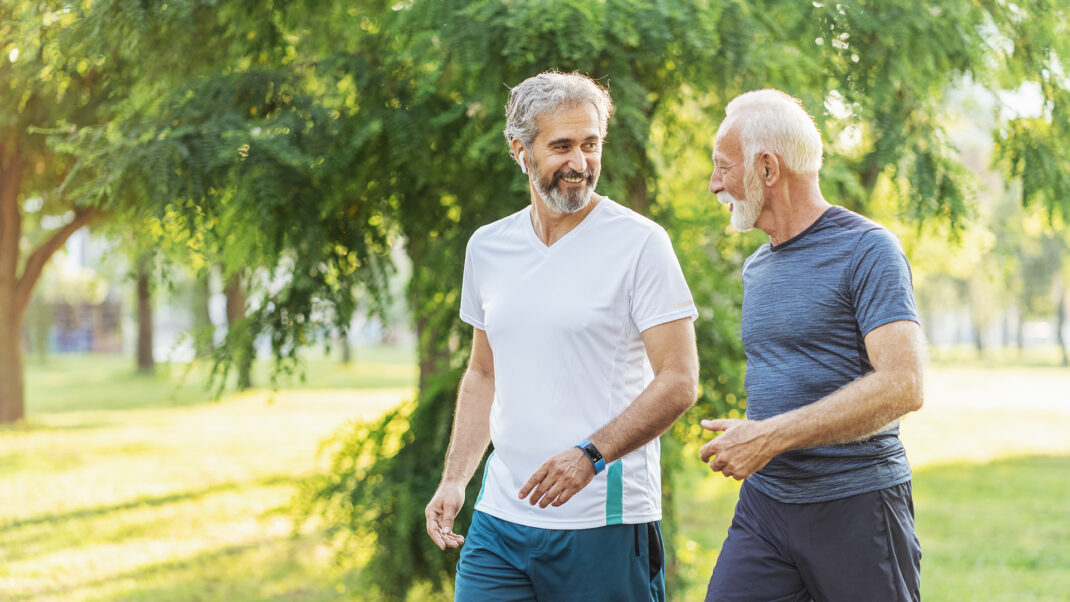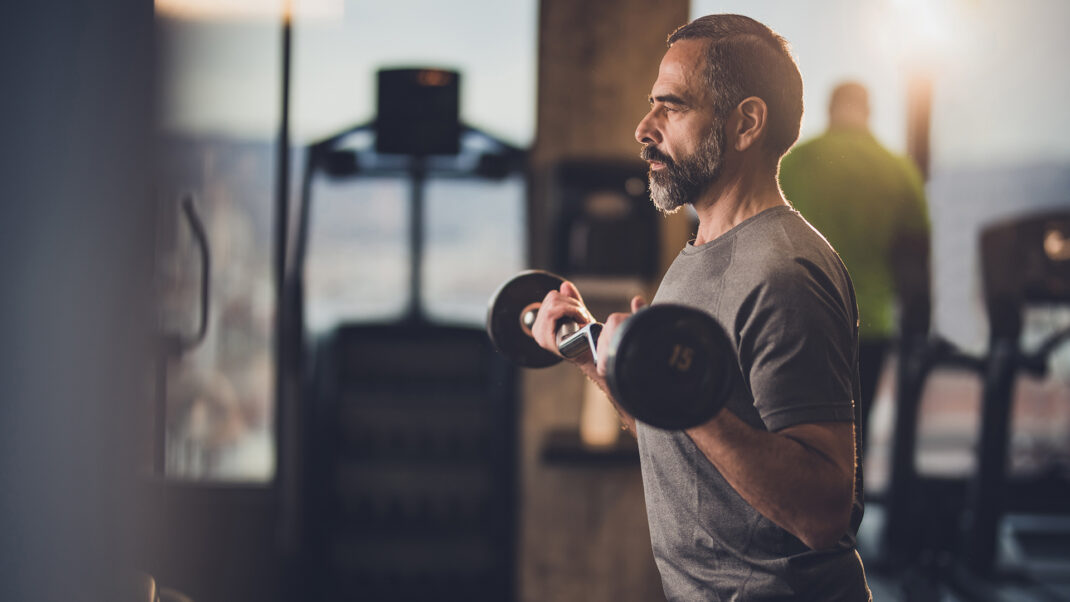Physical Literacy Is a Journey, Not a Destination
Steve Boyle aims to provide physical literacy opportunities for all people—throughout their lifetimes—so they can learn, explore and practice skills of movement, nutrition and self-regulation.

Steve Boyle is the CEO of the National Association of Physical Literacy (NAPL) and principal/founder of 2-4-1 Sports, a national organization that teaches children physical literacy using sports sampling through camps, clinics and school-based programming. Recently recognized by the Aspen Institute’s Sports & Society Program as one of eight model programs in the United States in the original Project Play report, 2-4-1 Sports embodies its motto, Life’s 2 Short 4 Just 1 Sport™. NAPL offers programming, certification and training in physical literacy.
Boyle’s philosophy focuses on lifelong wellness by recognizing the mind-body connection and the value of nutrition and mindfulness as they relate to physical literacy. A former Division 1 athlete, he has taught and coached throughout the United States. His diverse background—not only in teaching, working with children with cancer and coaching athletics, but also as a life coach, counselor and college adviser—makes him a highly sought-after speaker and consultant.
ACE: What do you feel has been the most detrimental effect of the obesity epidemic on our society?
Steve Boyle: The most glaring effect, of course, is the direct impact on life-span, but that is not the sole outcome. It is difficult to answer this question in isolation and pinpoint one singular “effect” or “impact.” Like a lot of things we talk about in relation to physical literacy, I see this particular dilemma as circular in nature. In other words, there is constant cause and effect. But when this generational ball stops rolling for a snapshot in time, the detrimental effect is a cycle of poverty and poor quality of life overall.
Look at it this way: When you don’t learn fundamental action skills, you are less likely to have the confidence to participate in activities of movement as you age. When you don’t know where your food comes from or you have little access to quality food, you are likely to trend toward obesity because you eat what tastes good, what is readily available and what you can afford. When you trend in that direction, you are less likely to develop the self-regulatory skills it takes to break this cycle, because you are ripped of the desire to do so. We know that obesity is more common among those who live in poverty and who therefore suffer from poorer quality of life. We spend up to an estimated $210 billion on obesity-related illnesses, so imagine if we could break this cycle and take a proactive approach by investing that sum in education that included physical literacy training and programming.
ACE: What impact do you feel making sports more accessible to youth will have on the health of future generations?
Steve Boyle: We must return play to kids. This will have a dramatic and lasting effect on our society as a whole. Kids learn fundamental life lessons through sport. They learn problem-solving, teamwork and how to both lead and follow on the playing field. Kids have the potential to benefit in both body and mind through sport. No other experience can provide the same outcomes as sports participation.
To that end, we need to make more sports available to more people. If you go into urban areas around the country, you would think there were only two or three sports being played in the entire United States. That’s a problem, because children who don’t identify with having ability in those sports wind up leaving sport altogether, and most never return. If you were exposed only to math, and you were not a strong math student, do you think you would love school? No, you would probably drop out. That’s what happens when we expose kids to just a limited number of sports. Part of the issue is that we don’t teach them the fundamental action skills that cross over from one sport to the next.
Life’s 2 Short 4 Just 1 Sport was one of our original taglines. We live by that mantra. In doing so, we take a sport-sampling approach that casts as wide a net as possible to try to get all children involved. The tendency in youth sports has been to pay attention to the narrow end of the funnel—those children who show the most promise. We need to pay attention to the wide end of the funnel by recognizing that all children need the opportunity to benefit from play. We also need to train coaches properly and equip them with the skills they need to positively influence children under their care. Research shows that coaches providing a fun and engaging experience is the number-one reason kids return to a sport the following year. We can’t ignore that fact. At NAPL, we intentionally offer online training for coaches in the language of physical literacy. We are certain that when coaches acquire these skills they become better equipped to attract newcomers and retain players who are already involved.
ACE: What are some creative ways you feel communities can make sports and other physical activity opportunities more accessible to young people?
Steve Boyle: I love the idea of closing down streets and having free-play opportunities. This past fall, the town I live in closed several blocks to promote bicycling, and it was wildly popular. I have since seen an increase in bicyclists around town, including kids. We need public/private partnerships that make town-owned play spaces (indoors and outdoors) readily available for informal play without exorbitant costs. Perhaps most importantly, we need schools to bring back intramurals and interscholastic sports to the younger levels. We are losing millions of children in the middle-school years because we are not making sports accessible to kids where they spend most of their time—at school. We need to follow the lead of former First Lady Michelle Obama and the Partnership for a Healthy America’s Let’s Move! Active Schools and work purposefully to infuse physical literacy in our before-, during- and after-school programs.
ACE: What misconceptions—if any—do you believe our society has about people who may be struggling with their weight or finding it hard to adopt healthy habits? Why is it important for us to overcome those misconceptions?
Steve Boyle: Quite frankly, I think part of the problem is that we spend too much time talking about weight as opposed to overall health. Humans are quick to judge. We can see weight, so we’re likely to say, “He’s fat” or “She’s skinny,” and that becomes the narrative—and then the owned identity of the target. We can’t quite as easily see health and therefore are less likely to say, “She’s unhealthy” or “He’s healthy.” We are predisposed to judge what we can see. The focus has shifted away from strong, healthy bodies to quick-fix cleanses and fast-food fitness. It’s not a sustainable model for humans or the planet.
We need to encourage people to build their fundamental movement, nutrition and mindfulness skills as a path toward a lifetime of health. Health is not a weight issue. In fact, if one is living a healthy lifestyle, it’s typically not an issue at all. What we need to do is move away from the language of weight and really help people understand the language of physical literacy. Words matter! We need to help people trust that good health will follow and that a healthy body weight—based on one’s individual genetics—will be a natural consequence of living a physically literate lifestyle.
ACE: In what ways do you feel health and fitness professionals can improve on their efforts to reach people affected by obesity—especially young people—and lead them to long-term, healthy lifestyle change?
Steve Boyle: The definition of physical literacy that we use is “the ability, balance, confidence, desire and explorative nature to be active for life.” We have tied in “balance” and “explorative nature” to the historical definition because we recognize that people are more likely to stay on the lifelong journey of physical literacy if they lead a balanced lifestyle.
But they need choices and the opportunity to explore. Whether we’re talking about movement forms (e.g., sport, dance, yoga or hiking), about types of food and how to prepare them, or about self-regulatory skills, choices are necessary so people can see for themselves what they genuinely enjoy and what works best for them.
If it was as simple as saying, “Move, eat well and relax,” we wouldn’t have the issues we have. It’s more complex than that. We can’t assume that everybody knows how to move, eat well or relax. If I told the average person to dribble down court at full speed and then pull up for a jump shot, most would not understand exactly what to do or have the skills to do it.
We need to provide opportunities for all people—throughout their lifetimes (remember physical literacy is a journey, not a destination)—to learn, explore and practice skills of movement, nutrition and self-regulation. I believe that getting professionals in the health and fitness world to take this comprehensive approach, and model it, will help us reach the goal of eliminating the obesity epidemic by 2035.
Editor’s note: Bridging the Gap is a series of interviews conducted by ACE with professionals throughout the fitness and allied health industries, as well as our partners in the corporate world. ACE hopes this column will start a conversation among those entities about the impact of the obesity epidemic and how we can all work together to eliminate it by 2035.





